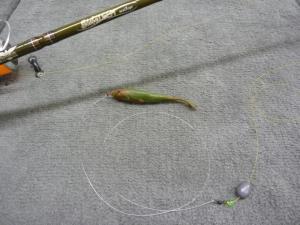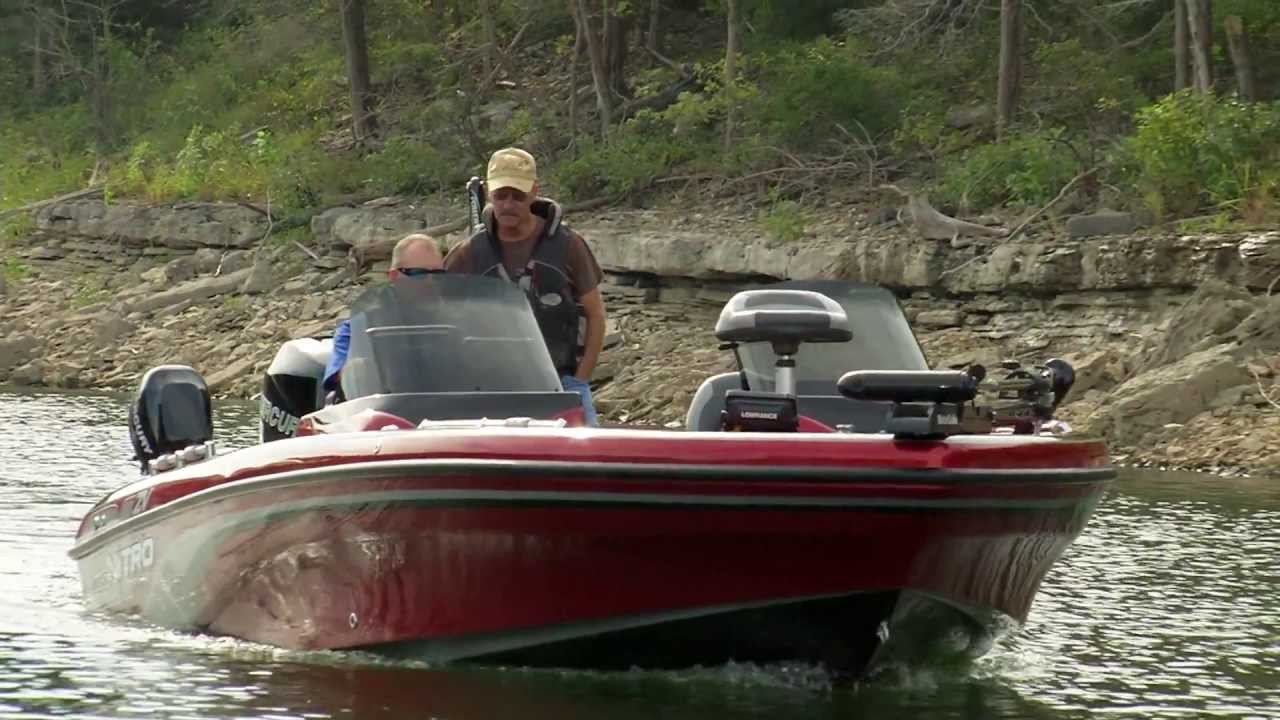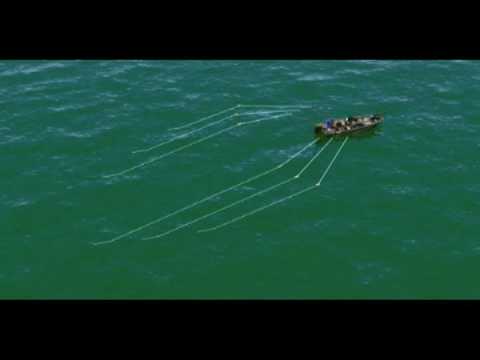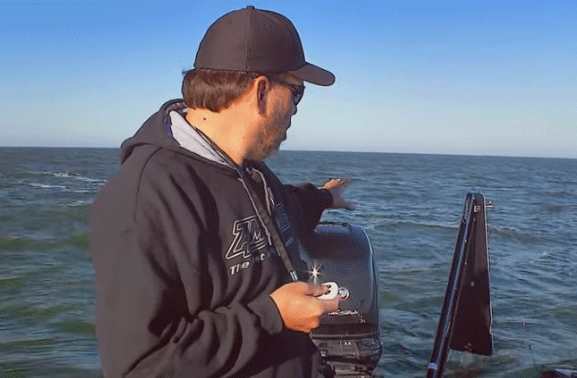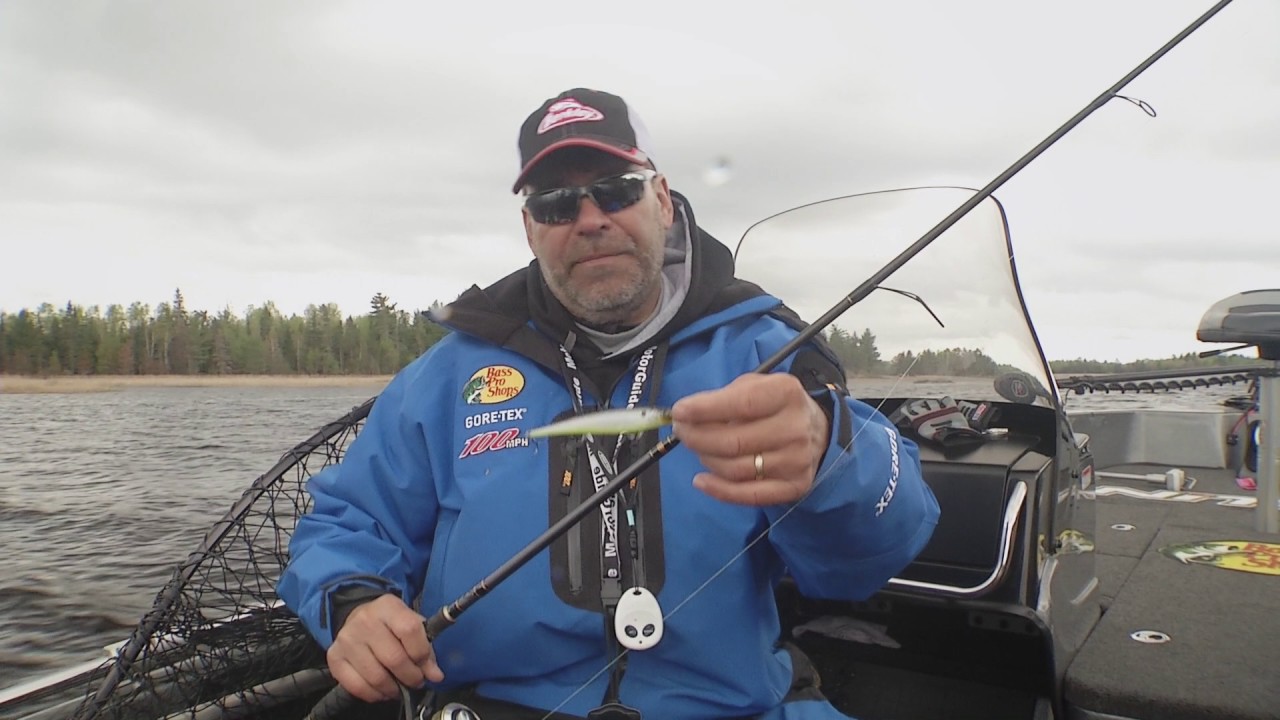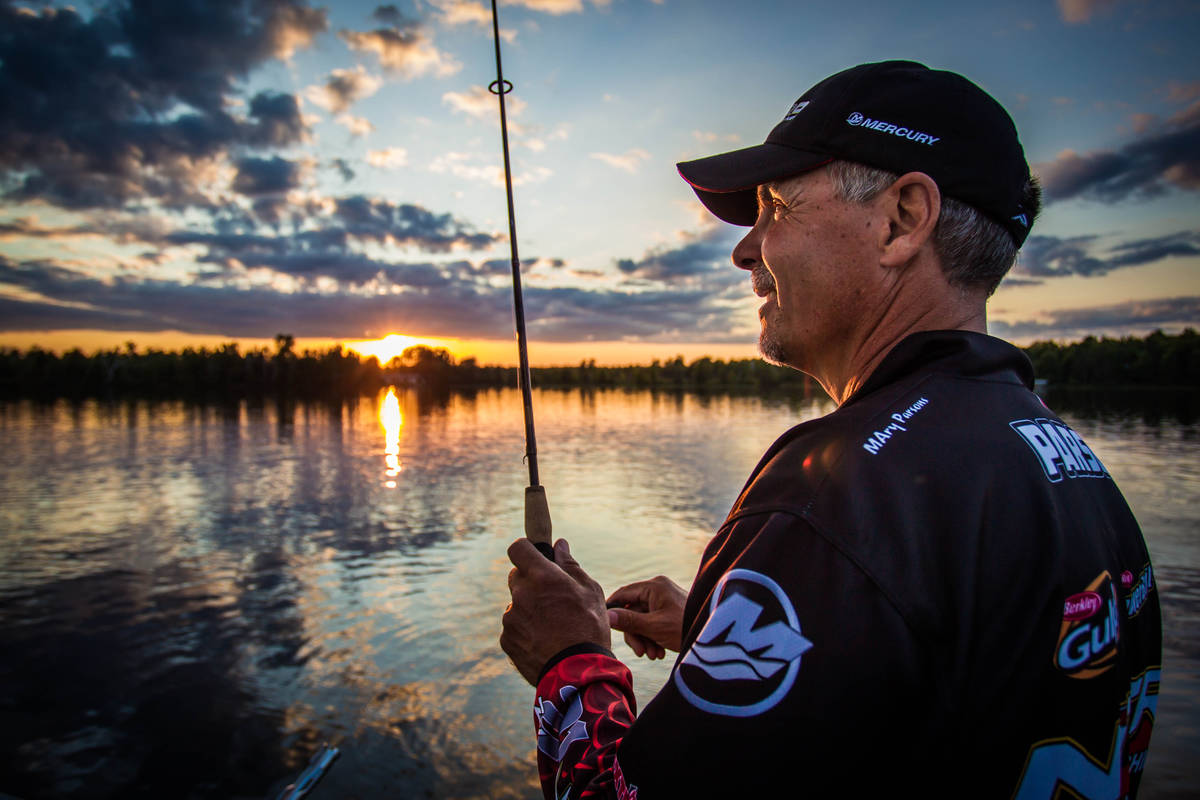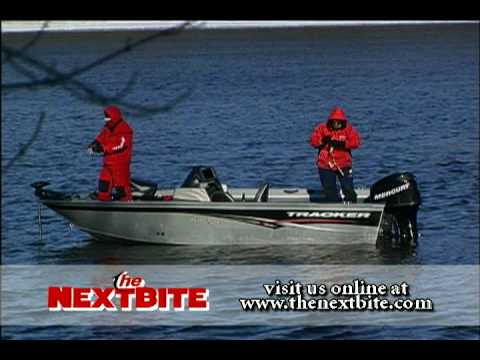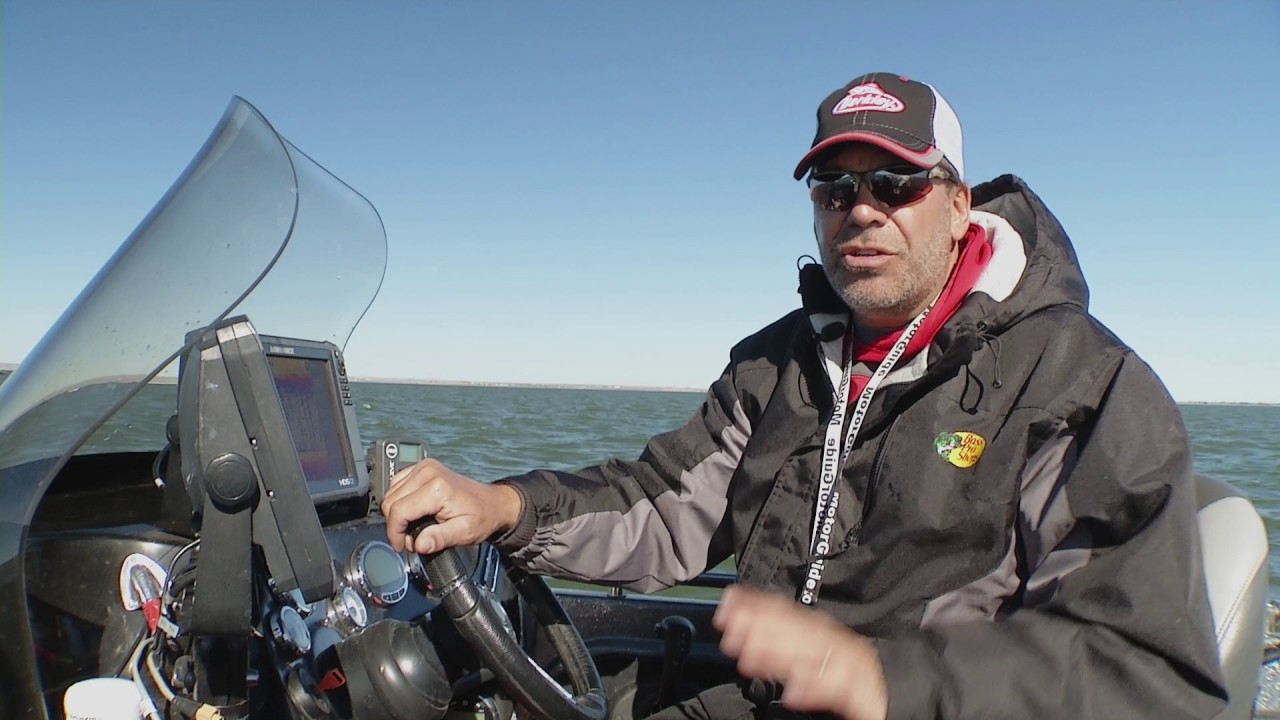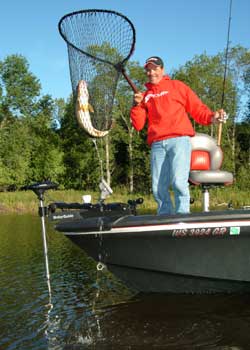 Not all lakes will harbor weed walleyes. This is a pattern primarily found in natural lakes since most reservoirs rarely contain any significant weed habitat, or at least not of the right type and density to hold any major population of walleyes. Natural lakes on the other hand typically offer plenty of weed habitat, and where there’s weeds there’s going to be fish.
Not all lakes will harbor weed walleyes. This is a pattern primarily found in natural lakes since most reservoirs rarely contain any significant weed habitat, or at least not of the right type and density to hold any major population of walleyes. Natural lakes on the other hand typically offer plenty of weed habitat, and where there’s weeds there’s going to be fish.
Sparse weed patches or stands of sporadic reeds may look inviting and relatively easy to fish and that’s fine if you’re after species such as pike or muskie. But if its walleyes you’re after, you need to search out thicker weed beds. While a given lake may grow several types of weeds, the main ones a walleye angler should concentrate on locating are Coontail and Cabbage (a common name used for broad-leaf varieties such as Curlyleaf Pondweed). For what ever reason these types of weeds attract walleyes more than most other weed varieties, probably because they provide ample shade, grow in deeper water (as well as shallow), and provide cover for ambushing prey.
Most anglers think of finding weeds in their favorite lake by concentrating on the weed beds they can see … the ones in shallow water. That’s a good place to start, and weeds in water as shallow as two feet will hold walleyes as long as the water is stained or off-colored. In clear lakes however, the best weeds may grow in depths of twelve to twenty feet.
Total Solutions Technique
When it comes to pulling walleyes out of the weeds, there are two basic presentations I tend to rely on. The first is designed to “weed-out” (pun intended) more active fish. Working the outside edges and occasionally over the top of the weed beds, I’ll cast a lipless, rattling style crankbait or a shallow to medium running crankbait to cover water and trigger bites from active fish. A bait with a good rattle system seems to be key here, attracting active fish and giving them a better target to home in on.
Once I have located an area that is holding fish, or if I feel the mood of the fish is such that a slower presentation is warranted, I will switch to jig with an artificial tail. The key to this style of fishing is to keep the presentation as vertical as possible by making short, accurate casts to holes in the weeds or to irregularities along the weed edge where walleyes will set up to ambush prey. A simple underhand pitch-style cast works well for this. Be sure to allow the jig to fall straight down into the weeds before engaging the reel. If you don’t get bit right away, hop the jig a couple of times, then retrieve it and make another cast.
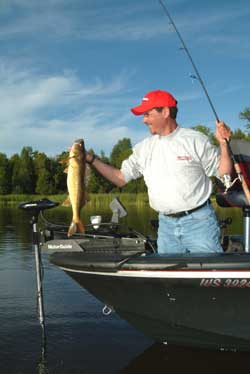 Total Solutions Equipment
Total Solutions Equipment
Equipping yourself to fish walleyes in the weeds is a little different from other techniques. For pitching jigs, the same spinning reel you’d use for vertical jigging will do just fine, but a little heavier line such as eight or ten pound test Berkley FireLine or eight pound test Berkley Trilene Sensation will give you the extra strength to pull the fish out of the cover. This is also a situation where a longer rod comes in real handy. A seven foot medium action spinning rod helps in making accurate, pitching type casts and is just the right length for working the small jigs in and out of holes in the weeds. The extra length is also beneficial for getting good hook sets and pulling fish from cover.
On the business end, a small jig tipped with a Berkley 3 inch Gulp Fry, or a Berkley 3 or 4 inch Gulp Minnow in the 3 or 4 inch size tops my list of baits. These types of scent impregnated artificials are very effective for walleyes and they stay on the hook better than live bait when you’re pulling them through weed cover. One tip here: When fishing with plastics, it is often beneficial to go with a slightly heavier jig (one eighth to one quarter ounce) and give the lure a bit more “pop” on the retrieve. The enhanced action adds to the attraction and triggering capabilities of the presentation.
For casting cranks, the same rod and reel outfit can be used, although some anglers prefer a six and a half to seven foot bait casting rod and reel combo spooled with ten to fourteen pound line.
Favorite crankbait for fishing around weeds would be the Berkley Flicker Shad. The Flicker Shad is the ideal crankbait for working weed edges, and comes in 4 sizes to cover a variety of depths. Casting the Flicker Shads on a spinning rod spooled with eight pound test FireLine will help you get a bit more depth out of the baits, as well as help you rip then through weed cover, which by the way can entice some ferocious bites!
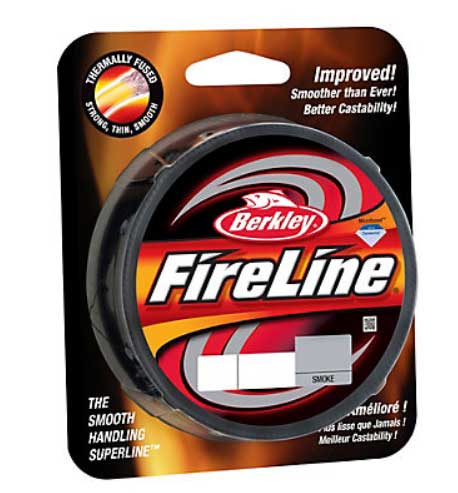
|
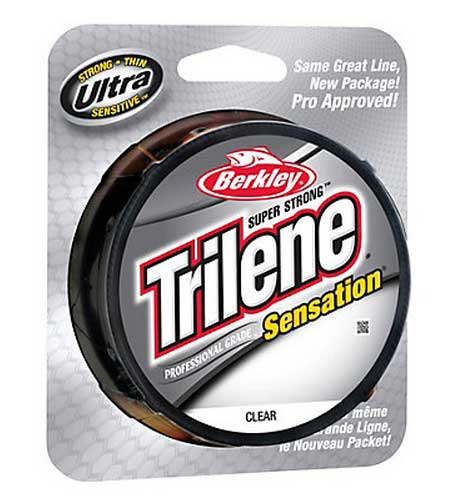
|
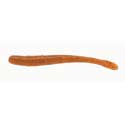
|
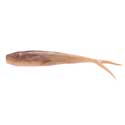
|
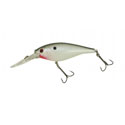
|

